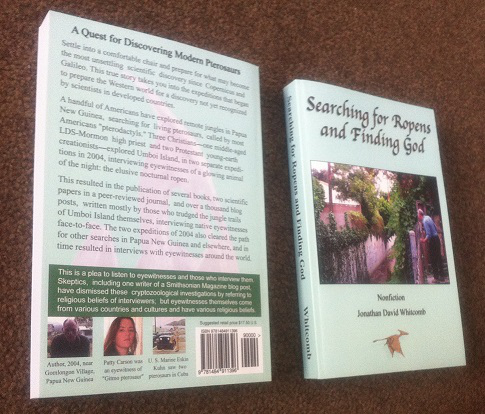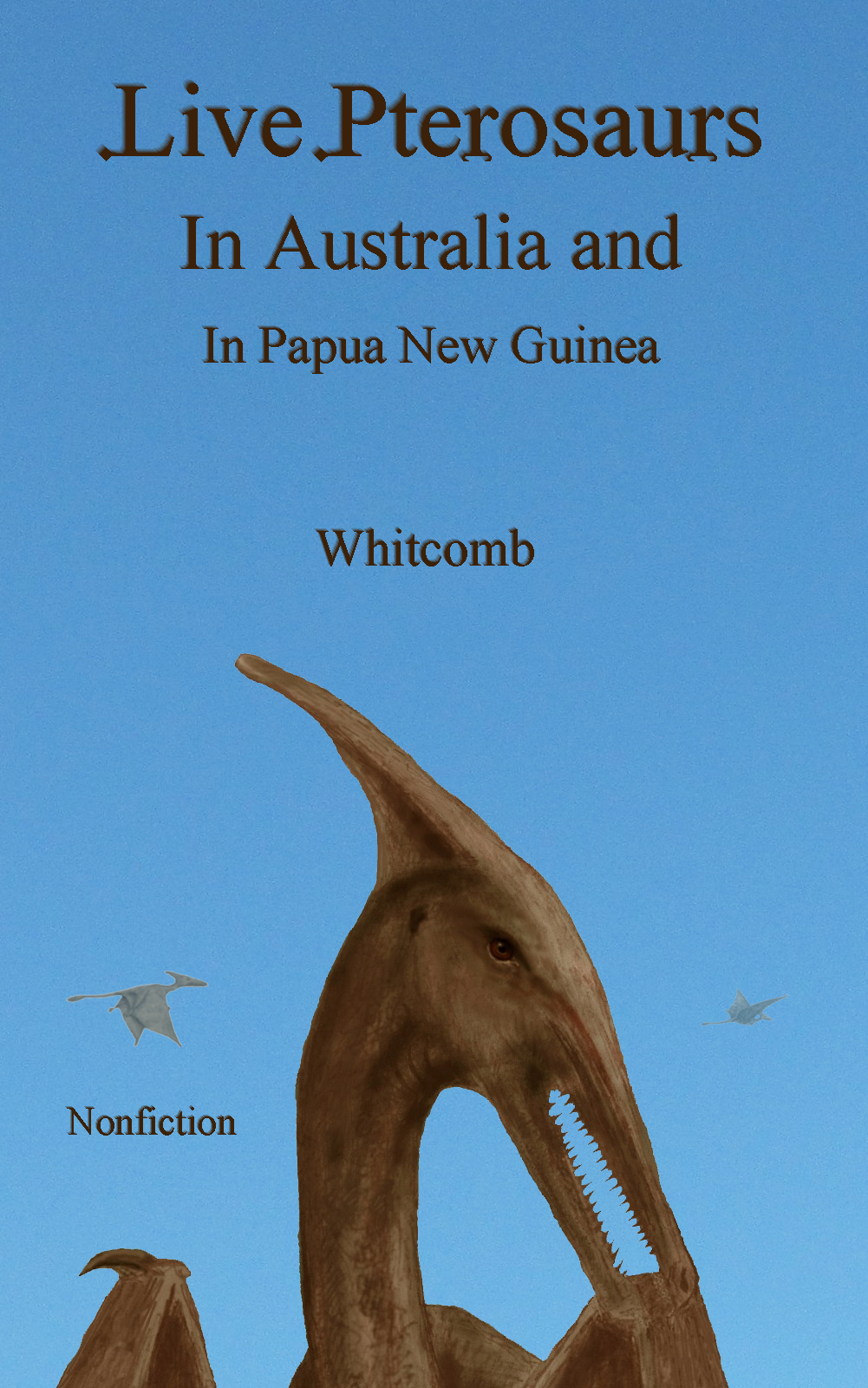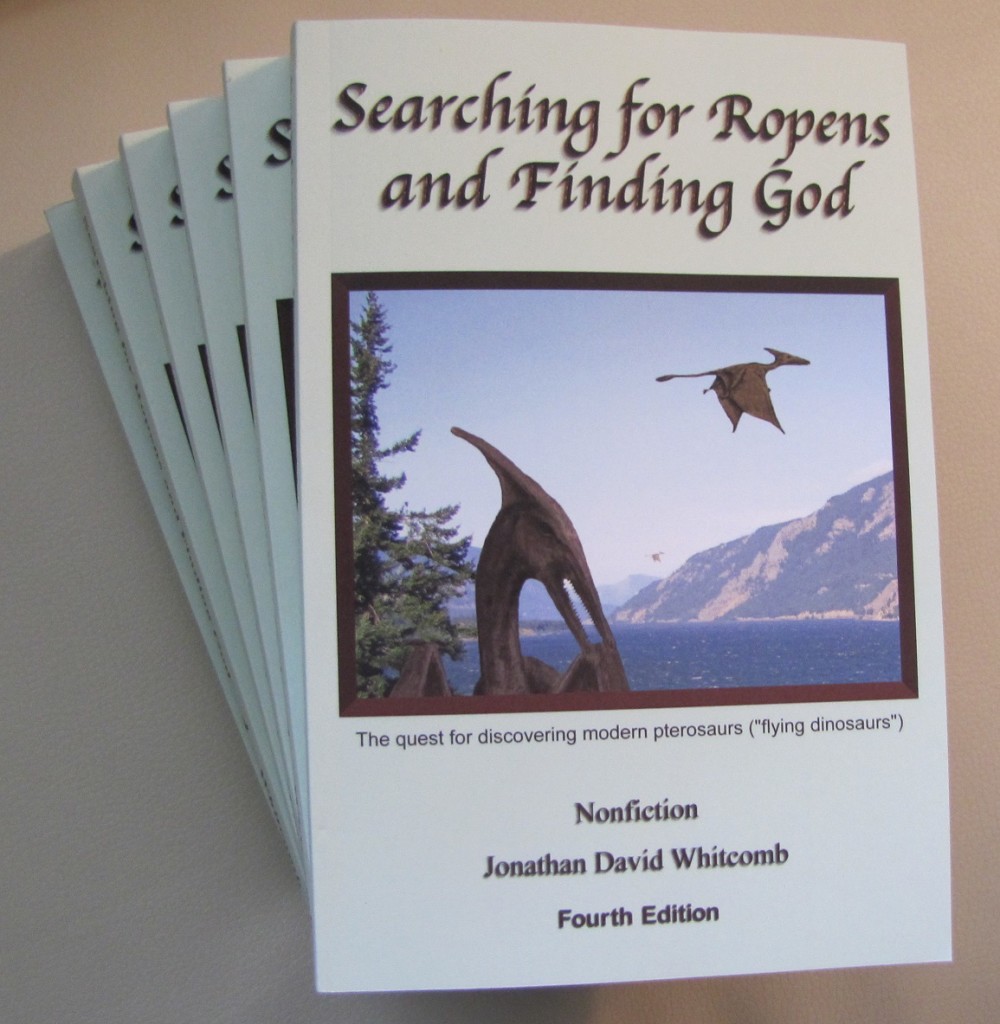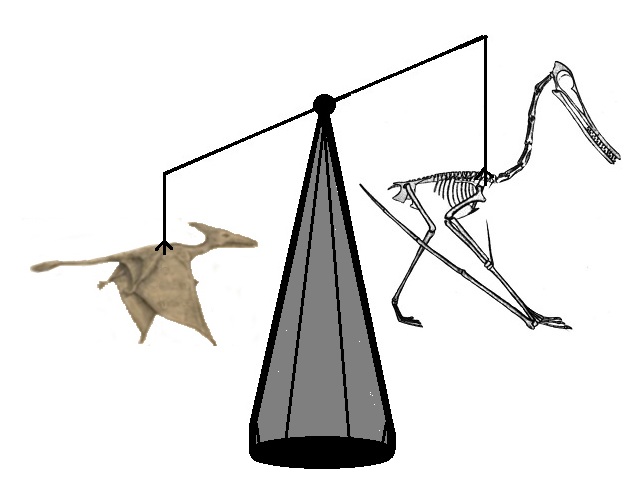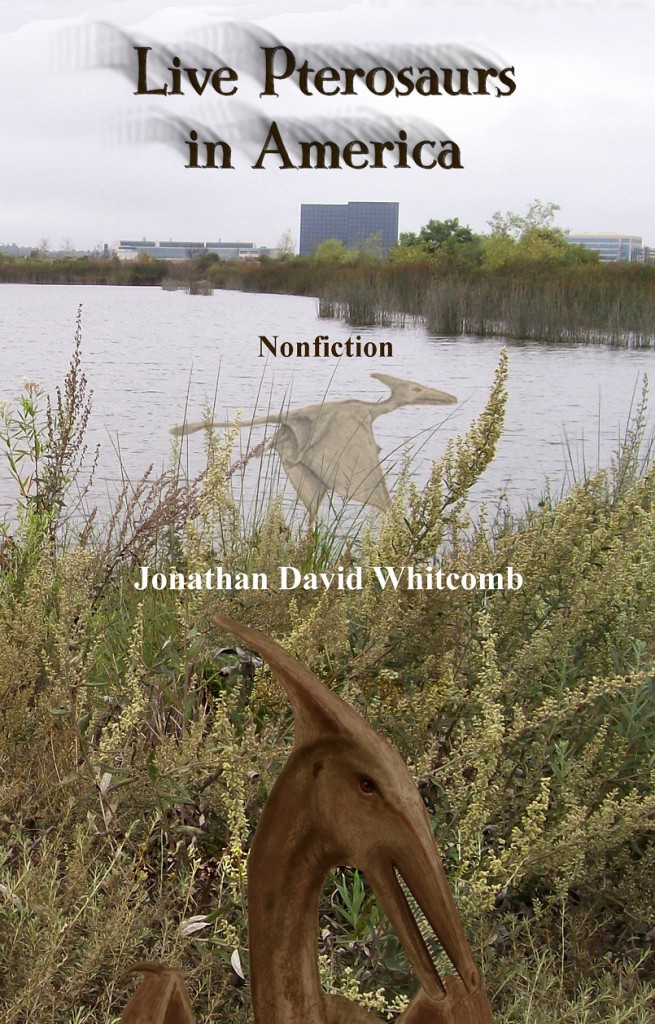Nobody who understands the distinction between dinosaurs and pterosaurs thinks of the ropen as a dinosaur. But whether or not it’s a pterosaur—that has been controversial. My first book, Searching for Ropens, a spiritual-cryptozoology cross-genre, is now in its second edition, with a revised and expanded third edition in preparation. It was written entirely on the assumption that at least one species of modern pterosaur could be living in Papua New Guinea.
Most nonfiction dinosaur books available on Amazon seem to be strictly traditional standard-model in foundation, probably with no allowance for modern living forms of creatures thought long extinct. Before examining my book let’s see a bit about two of the most popular Amazon ones for dinosaurs.
- National Geographic Little Kids First Big Book of Dinosaurs (Amazon #1 children’s dinosaur book) – by Catherine D. Hughes (Author) and Franco Tempesta (Illustrator)
- National Geographic Kids Ultimate Dinopedia: The Most Complete Dinosaur Reference Ever (for children ages 7-10) – by Don Lessem (Author), Franco Tempesta (Illustrator), and Rodolfo Coria (Introduction)
Searching for Ropens (second edition)
Acknowledgements (beginning)
A key to successfully exploring a sparsely populated wilderness is, ironically, people-skills. My father and mother inspired others, lifting self-esteem; following their examples, I’ve tried inspiring others, though I’ve usually been the one encouraged or inspired. In particular, the pioneering investigations of Jim Blume, Carl Baugh, and Paul Nation illuminated the path for my own investigation in Papua New Guinea . . .
Introduction (beginning)
Yes, I did search for giant living pterosaurs in Papua New Guinea, and I criticize the philosophy that causes Westerners to thoughtlessly dismiss any eyewitness report that suggests a living pterosaur; I censure nobody, however, for simply doubting such creatures still fly, for the idea defies an entrenched Western belief. About the ropen, believe what you will; what do I think about this creature? Such is the power of the testimonies of the eyewitnesses I’ve encountered, that it’s as real to me, almost, as if I had stared it in the face.
Chapter One (first paragraph)
It looked like a dead pterodactyl: not fossil bones but with skin, like it had died recently. Could these creatures, non-extinct, still fly? Although I never verified the authenticity of the photograph in the soon-forgotten library book, this idea—living pterodactyls—would be awakened four decades later, plunging me into the most dramatic adventure of my life: exploring a remote tropical island, searching for giant living pterosaurs.
.
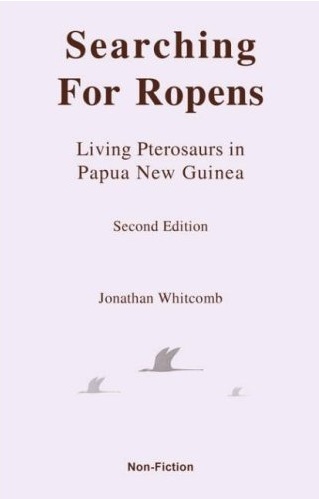
Searching for Ropens – second edition
.
Searching for Ropens (third edition)
Additional paragraphs are being added to the third edition, and probably at least one additional chapter.
Chapter One (fourth paragraph)
The existence of life I credited to God, from childhood respecting the Bible as nonfiction. When I was ten, my father, psychologist for the San Bernardino School District in California, showed me the largest collection of bird eggs in the Western United States, in the museum in our own little town of Bloomington. The variety of eggs and birds, all dead, fascinated me; but non-birds becoming birds discomforted me, for each form of life appeared to have a role in its own basic form.
The third edition is still being written; expect much more. [was published in the spring of 2014 but was later replaced by the fourth edition in October of 2014]
.
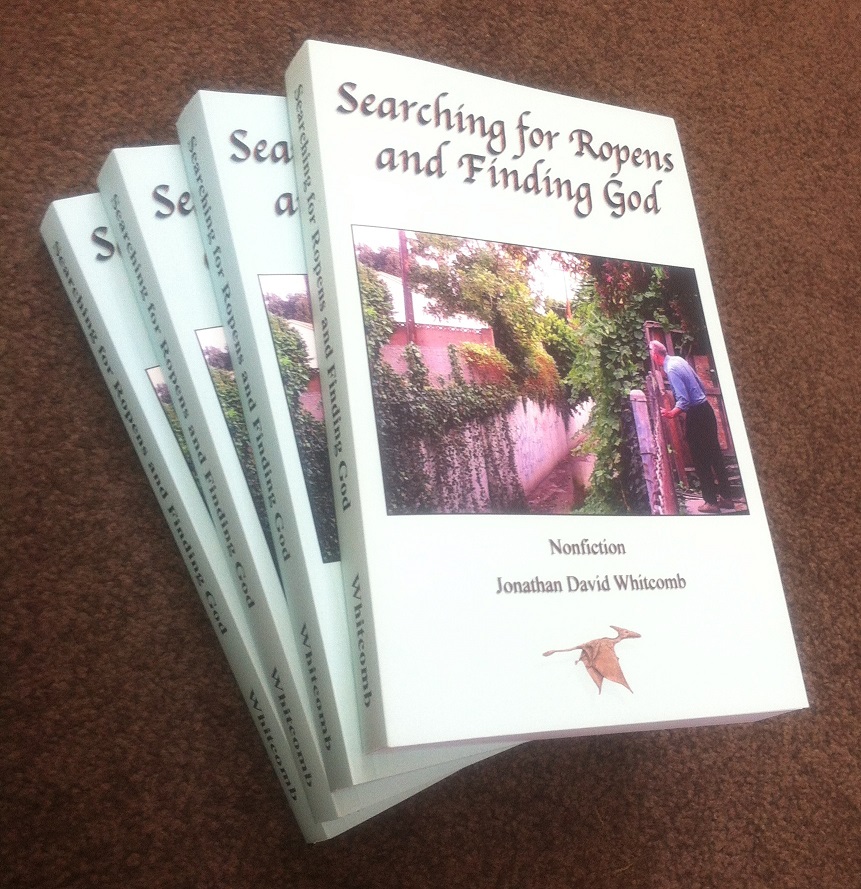
It was published in April, 2014: Searching for Ropens and Finding God (third edition), yet this was replaced by the new fourth edition, in October of 2014
BUY IT NOW on Amazon: the ropen book (revised 4th edition)
.
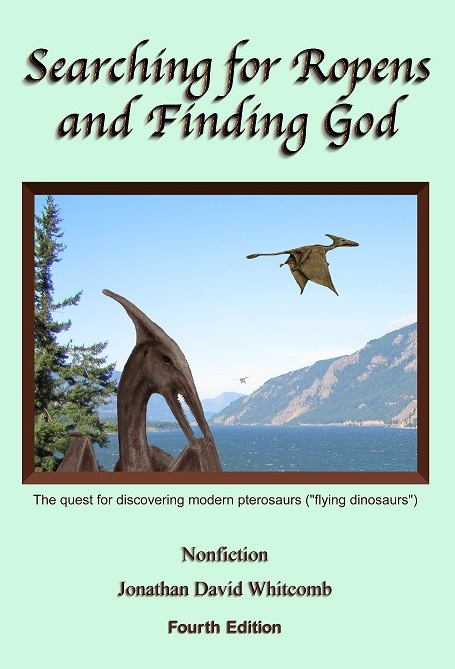 The ultimate edition, number four, also called “the Bible of modern pterosaurs”
The ultimate edition, number four, also called “the Bible of modern pterosaurs”
.
Searching for Ropens, second edition was ranked #6, but in contrast to the other nonfiction books this one is about non-extinct pterosaurs, yes, living “pterodactyls.” [Amazon books under a category stream that includes “dinosaurs”]
.



